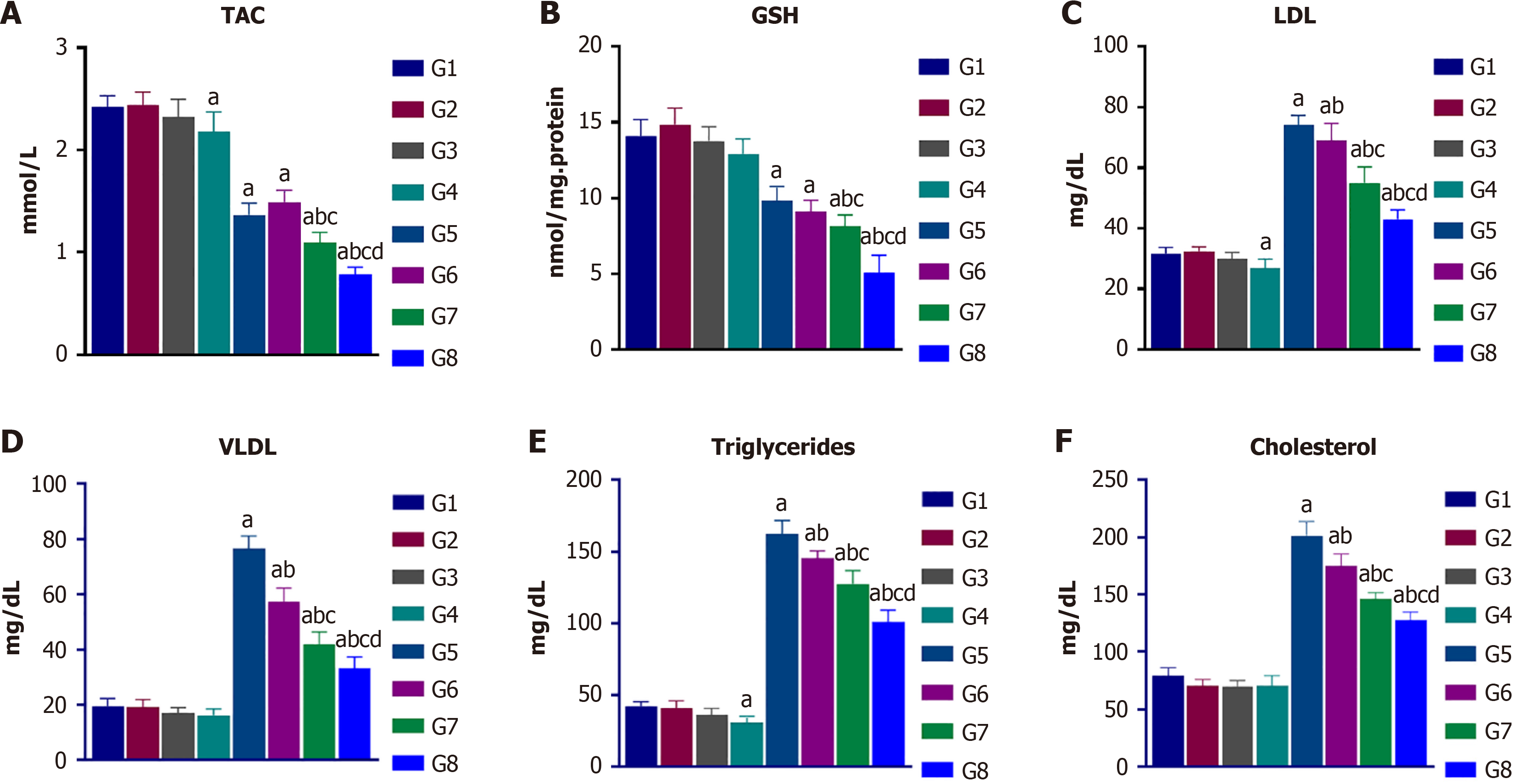Copyright
©The Author(s) 2025.
World J Diabetes. Feb 15, 2025; 16(2): 100395
Published online Feb 15, 2025. doi: 10.4239/wjd.v16.i2.100395
Published online Feb 15, 2025. doi: 10.4239/wjd.v16.i2.100395
Figure 3 Effect of L-arginine on the activities of serum total antioxidant capacity, reduced glutathione, low density lipoprotein, very low density lipoprotein, triglyceride, and total cholesterol levels in the normal and treated rat groups.
A: Total antioxidant capacity; B: Reduced glutathione; C: Low density lipoprotein; D: Very low density lipoprotein; E: Triglyceride; F: Total cholesterol levels. G1 = Control group, G2 = Normal rats received 0.5 g/kg/day of L-arginine (L-Arg), G3 = Normal rats received 1 g/kg/day of L-Arg, G4 = Normal rats received 1.5 g/kg/day of L-Arg, G5 = Diabetic group, G6 = Diabetic rats received 0.5 g/kg/day of L-Arg, G7 = Diabetic rats received 1 g/kg/day of L-Arg, G8 = Diabetic rats received 1.5 g/kg/day of L-Arg. The data presented as means ± SE (n = 12). aP < 0.05 vs the control group. bP < 0.05 vs the diabetic group. cP < 0.05 vs the diabetic + L-Arg 05 g/kg group. dP < 0.05 vs the diabetic + L-Arg 1 g/kg group. TAC: Total antioxidant capacity; GSH: Glutathione; LDL: Low density lipoprotein; VLDL: Very low density lipoprotein.
- Citation: Mansouri RA, Aboubakr EM, Alshaibi HF, Ahmed AM. L-arginine administration exacerbates myocardial injury in diabetics via prooxidant and proinflammatory mechanisms along with myocardial structural disruption. World J Diabetes 2025; 16(2): 100395
- URL: https://www.wjgnet.com/1948-9358/full/v16/i2/100395.htm
- DOI: https://dx.doi.org/10.4239/wjd.v16.i2.100395









